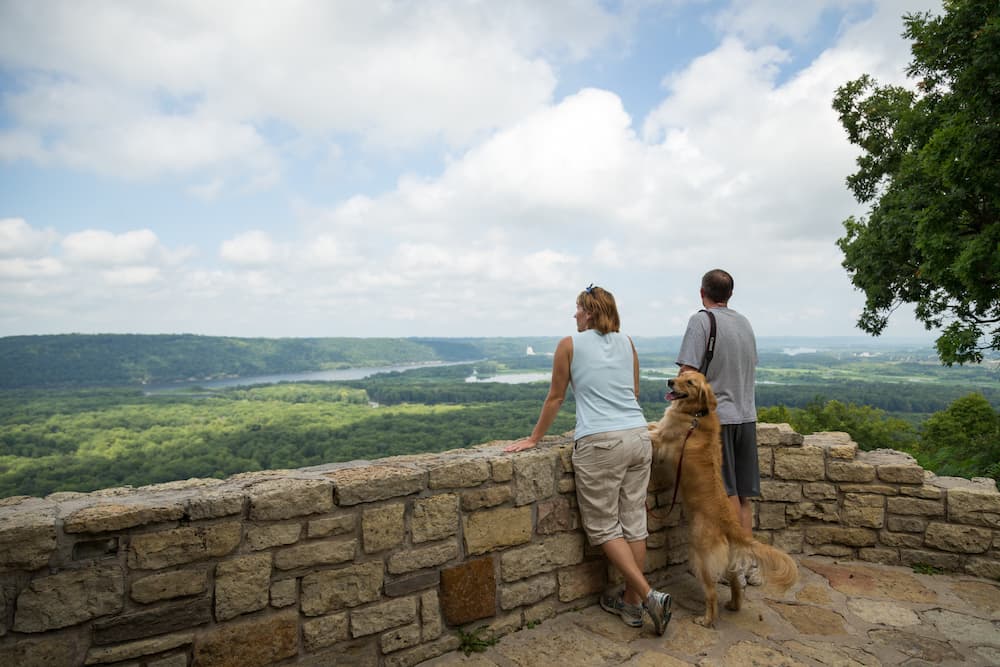The Great River Road was recently designated an All-American Road by the Federal Highway Administration, in part because of the National Scenic Byway’s historic and cultural significance. Here are a few places to visit where you can learn about the people and places that shaped the Mississippi River Region.
Wickliffe Mounds State Historic Site, Kentucky
Learn about the sophisticated cultures that called the Mississippi River Valley home at this state historic site just across the river from Cairo, Illinois. The Mississippian (or mound-building) culture called this area home between the years of about 1100 and 1350, and present-day visitors can see several mounds built by these Native peoples at this scenic site. There is also a museum that features exhibits of items excavated from the archaeological site, including Mississippian pottery, stone tools and other artifacts. The Ceremonial Mound—the largest at the site—offers a spectacular view of the Mississippi River and surrounding bluffs.
Learn more about Wickliffe Mounds here.
Wyalusing State Park, Wisconsin
One of Wisconsin’s oldest state parks, this stunning natural area sits 500 feet above the confluence of the Wisconsin and Mississippi Rivers just south of Prairie du Chien. The park is well-known for its natural beauty, with several stunning vistas of the river valleys below, and dozens of animal and bird species, including deer, beaver, fox, eagles, owls, and songbirds, make their home in the park. Wyalusing State Park—the name means “of the warrior” in the Lenape language of the tribes who lived in the region—is also home to the Wyalusing State Park Mounds Archaeological District, a collection of several Native American burial mounds that are listed on the National Register of Historic Places.
Learn more about Wyalusing State Park here.
Arkansas Post National Memorial, Arkansas
Located at the confluence of the Arkansas and Mississippi rivers, this historic site is the home of the first semi-permanent French settlement in the lower Mississippi River Valley—a trading post called “Poste de Arkansea” established in 1686 at the Quapaw village of Ostouy. Arkansas Post has served as a gathering place for the French, Spanish and Americans in the centuries since, and by 1819, it was a thriving river port and was selected as the first capital of the Arkansas Territory. Today, travelers can explore the visitor center and museum to view exhibits on the site’s history, explore Arkansas Post’s historic town site via walking trails and even see historic weapons demonstrations.
Learn more about Arkansas Post National Memorial here.
Mississippi River towns, Minnesota
A trip along the southern part of Minnesota’s section of the Great River Road is a trip through history. These cities depended on the Mississippi River for their livelihood, and signs of these towns’ prominence in the late 19th and early 20th century can still be seen today. Hastings is home to two historic districts: the East Second Street Commercial Historic District, which includes 35 structures built between 1860 and 1900, and the West Second Street Residential Historic District, consisting of more than a dozen homes built in the 19th century. Red Wing—home to the famous boot company of the same name—has five historic districts, and the St. James Hotel, which was built in 1874, is one of the only hotels of its size and character still in operation along the river in Minnesota. Other river towns of note include Wabasha (Minnesota’s oldest city) and Winona (known for its historic downtown and attractions like the Minnesota Marine Art Museum).








